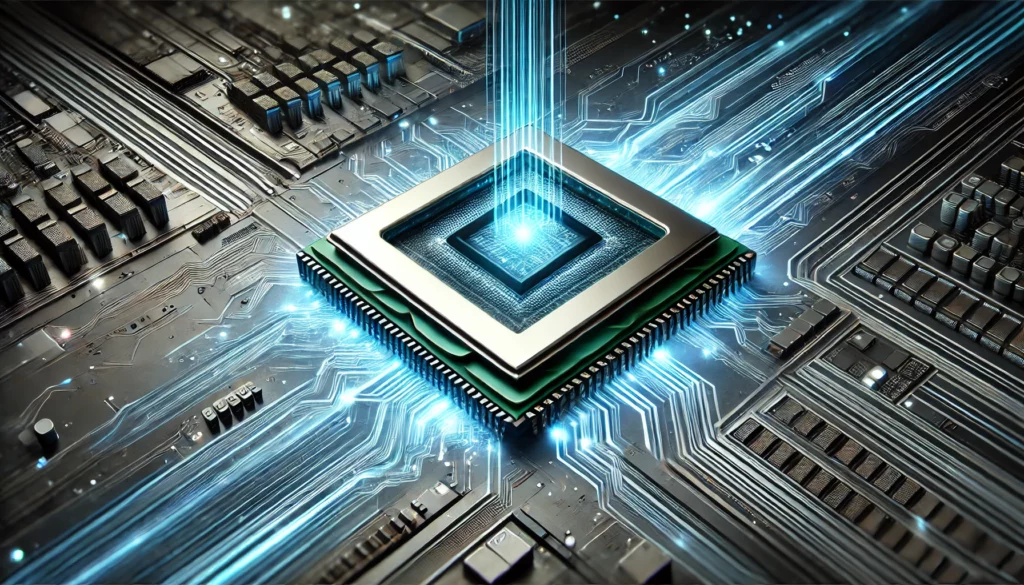The Future of Computer Processors
In computers, there are two important types of processors: the CPU (Central Processing Unit) and the GPU (Graphics Processing Unit). Each one has a special job. CPUs are like the “brains” of the computer, handling many tasks at once, while GPUs are great at handling lots of smaller tasks at the same time—especially tasks related to graphics and gaming. But as CPUs get more powerful, some people wonder if we’ll even need GPUs in the future. Let’s find out!
What Do CPUs and GPUs Do?
- CPUs are designed to handle all the different tasks your computer does, like running programs, checking emails, or browsing the web. CPUs usually have a few cores (processing units) that can each do different things at the same time. This helps your computer multitask. You can read more about CPUs on Intel.com.
- GPUs are mainly used for parallel processing, which means they handle lots of similar tasks at once. This is super helpful for tasks like gaming, video editing, or 3D modeling because GPUs can process many images or frames at once. That’s why they are so important for high-end gaming and graphics work. Learn more about GPUs from NVIDIA.
Why CPUs Are Getting More Powerful
- More Cores
Many modern CPUs are being built with more cores, which means they can do many things at the same time. For example, some CPUs now have up to 64 cores, which lets them handle tasks that only GPUs used to be able to do. While GPUs are still better for certain tasks, CPUs are getting closer to doing more of that work. You can explore AMD’s latest multi-core CPUs on AMDs Website. - Heterogeneous Computing
New CPUs, like Apple’s M1 and M2 chips, are combining different types of processors into one. These chips have regular CPU cores for general tasks and other cores that work like a GPU, handling graphics and even machine learning. This means some tasks that used to need a separate GPU can now be done by the CPU. Learn more about Apple’s M1 chip at apple.com. - AI and Machine Learning
GPUs have been really good at handling AI and machine learning because they can process a lot of data at once. But now, CPUs are starting to have special parts built into them to do this kind of work. This could reduce the need for GPUs when running AI programs. Intel’s new AI-focused CPUs are leading this shift, and you can read more about them on intel.com. - Better Integrated Graphics
Many CPUs now have something called integrated graphics, which are built-in graphics processors. These are getting so powerful that they can handle light gaming, video editing, and other graphics-heavy tasks. CPUs like Intel’s Iris Xe and Apple’s M1 have very good integrated graphics that can replace basic GPUs for many users. More on Intel’s integrated graphics on intel.com.
Will We Always Need GPUs?
While CPUs are getting stronger, there are still some things that GPUs do better:
- High-End Gaming and Graphics
High-quality gaming and detailed 3D graphics still need the power of a GPU. Even though CPUs can now handle simpler graphics, professional gamers and people who create 3D models or videos still need GPUs to get the best performance. Check out NVIDIA’s lineup of gaming GPUs. - Big Data and Scientific Computing
When it comes to processing huge amounts of data, like in science experiments or big databases, GPUs are still the best. Their ability to do lots of calculations at once is much faster than what most CPUs can do. - The GPU Ecosystem
Companies like NVIDIA have built special systems that only work with their GPUs. These systems are used in things like machine learning and AI, so GPUs will still be needed for those tasks. For example, NVIDIA’s CUDA platform is a big part of this ecosystem. You can learn more about CUDA on NVIDIA’s website.

What Could Happen in the Future?
As CPUs get more powerful, they might take over some of the jobs that GPUs do today, like handling graphics for basic games or running AI programs. However, for super demanding tasks like professional gaming, video editing, or scientific research, GPUs will still be necessary.
In the future, we may see hybrid processors that combine the best parts of both CPUs and GPUs. This would make computers even more powerful and allow them to handle a wider range of tasks without needing separate processors.
Conclusion
CPUs are getting stronger and more versatile, and with improvements like more cores and better integrated graphics, they are starting to take over tasks that once required a GPU. However, for the toughest jobs—like high-end gaming or complex scientific computing—GPUs will still be around for a while.
So while CPUs are catching up, GPUs still have an important role to play. It will be exciting to see how both of these processors evolve in the years to come!